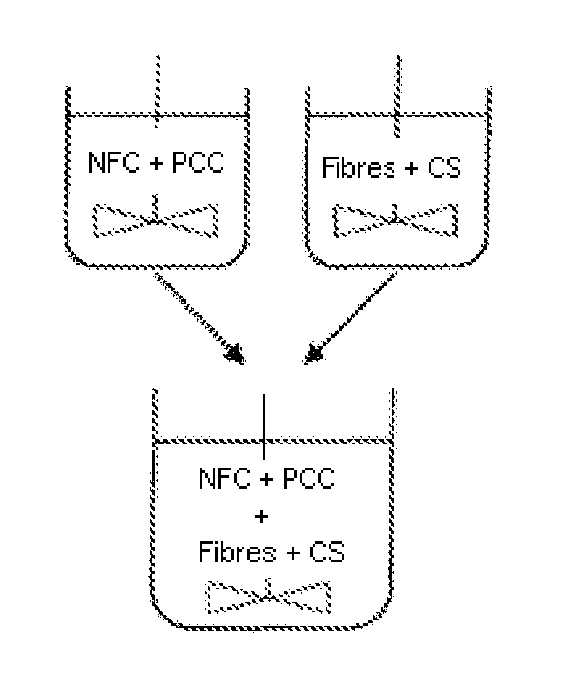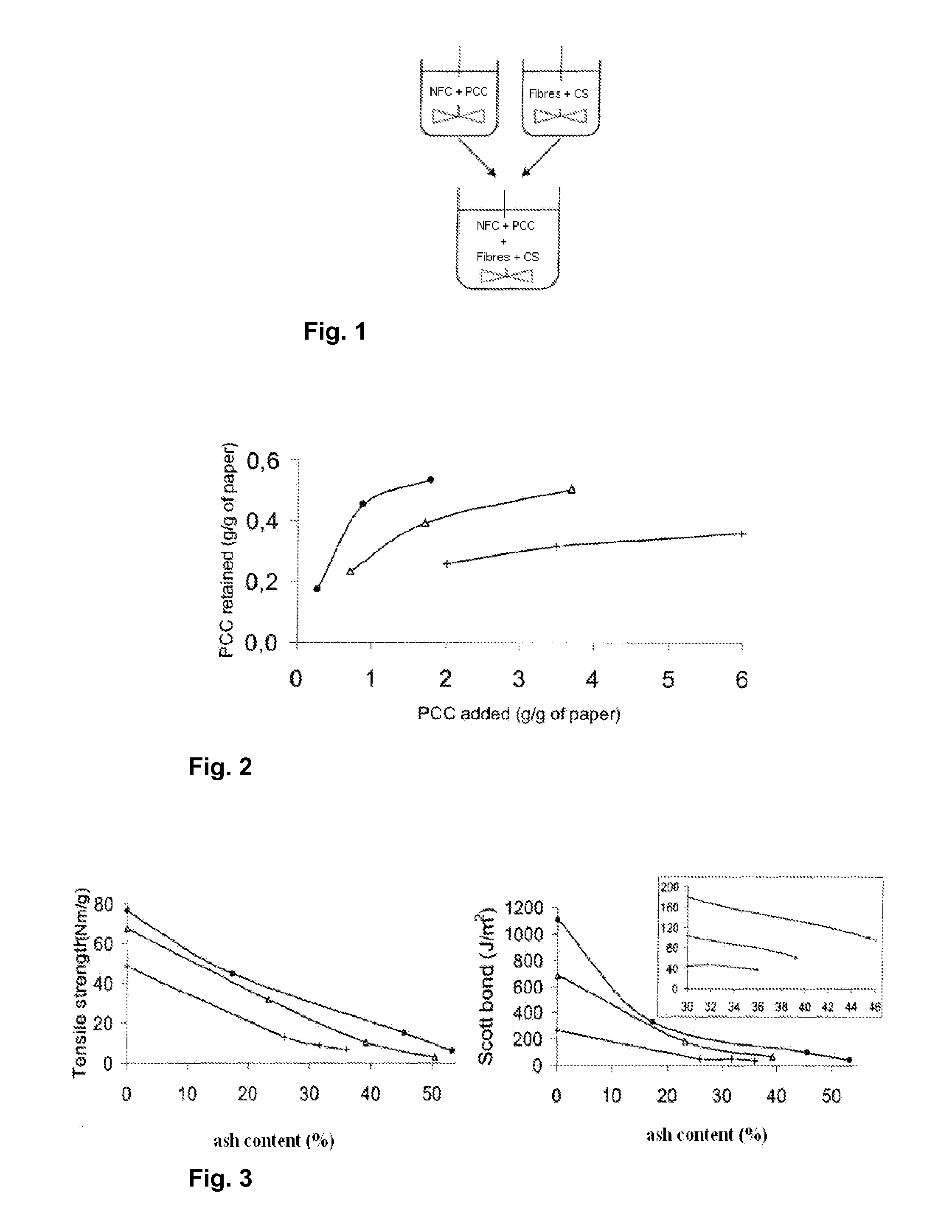Method for producing furnish, furnish and paper
a technology for furnishing and paper, applied in the field of furnishing, furnishing and paper, can solve the problems of inability to use in high concentrations, deterioration of mechanical properties of paper products, and inability to achieve high loading of fillers, improve the interaction between fibres and fillers, and improve mechanical strength
- Summary
- Abstract
- Description
- Claims
- Application Information
AI Technical Summary
Benefits of technology
Problems solved by technology
Method used
Image
Examples
example 1
[0035]This example was carried out to demonstrate that the method according to the invention clearly increases the filler retention and strength of paper sheets with a high filler content.
[0036]The materials used in this experiment were the following:
Fibres
[0037]Dried hardwood (birch) bleached chemical pulp was used in the experiments. About 360 g (o.d.) of pulp was soaked overnight in 5 l of water and beaten for 50 minutes at a consistency of 1.6% in a Valley beater (ISO 5264-1) to the Shopper-Riegler (SR) number (ISO 5267-1) of about 42. Afterwards 2 l of water was used to remove the last fibres remaining in the beater and added to the fibre suspension. This suspension was fractionated in a Bauer McNett classifier (SCAN-CM 6:05) using a 200 mesh wire to remove the fines fraction. At this point the SR number was about 18. Finally, the pulp was washed, first by acidic treatment (0.01 M hydrochloric acid) to remove metal ions and afterwards the fibres were converted to sodium form wi...
example 2
[0059]The aim of this example was to test different strategies of mixing filler and fibres with cationic starch and nanofibrillated cellulose in order to determine their influence on paper strength. Another aim was to illustrate the effect of combining NFC and cationic starch for improving the strength of filled paper in situations where fines are present.
[0060]The materials used in the experiments are the following:
Fibres
[0061]Dried hardwood (birch) bleached chemical pulp was also used in this example. About 360 g pulp was soaked overnight in 5 l of water and beaten for 50 minutes at a consistency of 1.6% in a Valley beater (ISO 5264-1) to the Shopper-Riegler (SR) number (ISO 5267-1) of about 42. Afterwards, 2 l of water was used to rinse the beater and added to the fibre suspension. Finally, the pulp was washed, first by acidic treatment (0.01 M hydrochloric acid) to remove metal ions, and afterwards, the fibres were converted to sodium form with 1 mM of sodium bicarbonate. After ...
PUM
| Property | Measurement | Unit |
|---|---|---|
| Fraction | aaaaa | aaaaa |
| Fraction | aaaaa | aaaaa |
| Fraction | aaaaa | aaaaa |
Abstract
Description
Claims
Application Information
 Login to View More
Login to View More - R&D
- Intellectual Property
- Life Sciences
- Materials
- Tech Scout
- Unparalleled Data Quality
- Higher Quality Content
- 60% Fewer Hallucinations
Browse by: Latest US Patents, China's latest patents, Technical Efficacy Thesaurus, Application Domain, Technology Topic, Popular Technical Reports.
© 2025 PatSnap. All rights reserved.Legal|Privacy policy|Modern Slavery Act Transparency Statement|Sitemap|About US| Contact US: help@patsnap.com



